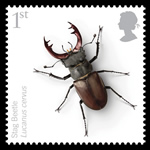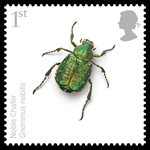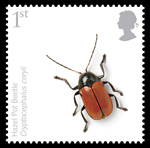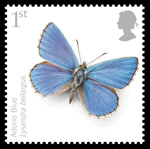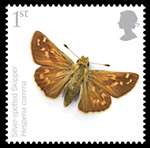We discussed so many things... It's frustrating that I can't recall everything, & the things I can recall may not be 100% accurate, but here are a couple of quick additions to last week's info before continuing:
1) When Dr. Barkay saw my
triangular monogram-seal, he was immediately able to read 3 Greek letters. Unfortunately, I forgot to write them down, one thing quickly led to another, & the only one I remember him identifying is a Tau. He referred me to Gerald Finkielsztejn as an expert on these (humorously noting that his last name is spelled "
the correct way you should spell Finkelstein").
2) My "rectangular cuneiform tablet" with wraparound text was the first antiquity I ever acquired (via a rare bookstore formerly in Beverly Hills, where I had been shopping for medieval manuscripts & collectible Bibles; Ms. Serendipity strikes again ... until now I didn't realize that the name of the store,
Krown & Spellman, was royal-related!). Until that time, which was around 1996, I didn't know that ordinary humans could collect antiquities, or that they were actually available for less than $1,000 (as the other items I was shopping for at the time were mostly over $1,000). I could write an entire book about this, & indeed that's what I was in the process of doing when I acquired my first LMLK handle several years later.
Another note is that I just learned today via
a review by Gordon Franz on ABR's website that Dr. Barkay appears in the recently released film,
Bloodline. For fans of that stuff about Mary Magdalene, Dr. Barkay obviously did not comment on it during our meeting. And for the record, I believe it's possible that she & Lazarus & other NT VIPs traveled to France, but I've not yet seen any evidence to even suggest that she & Jesus had any sexual relationship. I recently learned that Isaac Newton never married, & probably never had a sexual relationship with any ladies (or men for that matter) either ... at least there's no evidence for it, & he lived far more recently than Jesus, so there's no reason to assume that Jesus had to have succumbed to sexual temptation (assuming He was an ordinary guy, which I don't believe).
As I was showing him all the things I brought to the meeting, we learned that another meeting had been scheduled for Dr. Barkay, & his hosts were going to pick him up around 1:45pm. Dr. Zuckerman had commented earlier in the week that we all might be able to go out for lunch, but it became clear as I finished my presentation around 12:30 that time would not permit this; so instead, Dr. Zuckerman provided some snacks & refreshments for us.
Regarding Dr. Barkay's popularity, I commented to Drs. Zuckerman & Lundberg that we should auction him on
eBay to the highest bidder! (Dr. Barkay just smiled.)
Around this time, Dr. Lundberg continued showing me some PTM photos on the computer, & after finishing his snack, Dr. Barkay rejoined us, & I showed him some more pages on the LMLK Research website. The description that follows is not in exact chronological order, but is culled from my faulty memory, & includes some pages we visited while discussing my antiquities earlier in the meeting.
As a launching point, I went to LMLK.com, & showed them the contribution that Joe Zias made to
the Dealers page. I asked if anyone knew who he was, & they all did. Somebody even said with a little reluctant drama in their voice, "
Everybody knows him." Let's just say it wasn't exactly the same level of affection heard when asking someone who knows Dr. Barkay if they know who Dr. Barkay is!
I briefly explained the story behind the
IAA permit shown there in the context of the difference between my fake LMLK handle & Kris Udd's excellent replicas contrasted with genuine artifacts exported via the IAA, & someone asked humorously, "
But how do we know that your permit isn't fake?" I just chuckled. For you readers who are aspiring criminal investigators, I would invite you to go to the IAA, peruse their files for the original permit dated to January of this year, & then ask them if they're in the business of faking permits, or faking Amir Ganor's signature & seal! And if the copy I'm displaying proudly is fake, I'm sure they'd have more than a passing interest in investigating the matter ... you wouldn't have to tWist their proverbial arm very hard!
Next, I went to the new
lobby-page of the LMLK Philatelic Museum. (I showed Drs. Zuckerman & Lundberg one of the
1948 LMLK first-day covers.) Dr. Barkay immediately asked me if I knew Andre Lemaire.
For blog readers not familiar with LMLK research, Dr. Lemaire published the most recent & respected scholarly classification of LMLK seals in 1981. I began publishing
my own system online in 2002, & formally published them in my first book in 2004. I included 2 seal designs that Dr. Lemaire explicitly rejected as being unique when he studied them way back then. To his credit, Dr. Lemaire did not have access to additional photos that I do, nor to the computer graphics that greatly aided my analysis of the impressions.
I explained to Dr. Barkay that Dr. Lemaire has a copy of my book & seal template, & thanked me for them upon receipt, but I have not heard any comments from him since. Dr. Barkay paid me a tremendous compliment by saying (with regard to the 2 controversial seals that I named
S2DR &
Z4CY), "
You are right. Lemaire is wrong." Notice that it wasn't, "I
think you're right", or "You
may be right". He went on to say that he believed there may have been 25-30 LMLK seals. I did not challenge him on this speculation, but it's based on the possibility of other extremely rare specimens, for which I too have cautiously reserved spaces in
the Wikipedia entry for "LMLK seal" (21 known + 5 possible others = 26).
As I scrolled down on the Museum page, he stopped me, & asked me, "
Can you go back to that Mamshat one?" (Note that I don't actually recall exactly how he pronounced MMST, nor how he would spell it in an English transliteration; his publications simply use "mmst", but on this occasion, he vocalized it.) He was referring to the exceedingly rare
M2T he had published on behalf of the late Nahman Avigad. It suddenly dawned on me that he had done this, & I said, "
Oh, yeah, that's the one you recently published ... look, there's your name!" I regret not asking him if he knew where it was currently located, or who did the photography. You can't imagine how thrilling this was for me to be able to show off my web-publishing handiwork, at the same time showing off Dr. Barkay's scholarly handiwork with him sitting right there next to me!
This is the stuff dreams are made of! Even now, drafting this part of the blog a week later, it boggles my mind that God blessed me with this experience! I can imagine myself living at the end of the 19th century ... over a hundred years ago ... having the opportunity to sit at a table beside Charles Warren, & showing him some crude drawings of LMLK seals I made, along with credits to him for the first specimens he found in Jerusalem!
It is much to Dr. Barkay's credit that he travels around the world to meet with so many scholars & researchers, & takes the time to consider their opinions, rather than simply sit in a university office during the day, grade some papers, write some articles, then call it a day & go home to enjoy other pursuits. He's totally entitled to that, but these matters of Biblical history & archeology are genuinely in his soul.
"
...my heart standeth in awe of Thy word!"--Psalm 119:161
While on the subject of Avigad, I read to Dr. Barkay an excerpt from the doctoral thesis of
Larry Stager at Harvard, who reported a personal conversation with Avigad back in the 1970s, wherein Avigad questioned the idea that
Circles indicated a cancellation system because of their being post-fired incisions, noting that he had found a specimen that might've been incised before firing. Dr. Barkay stated that he examined every handle from Avigad's excavation, & not only found no such incision, but even discussed the matter with Avigad before he died, & that he knew of no such specimen.
The page I went to most frequently on this occasion was
the Corpus. I think the initial purpose was when he asked me how many LMLKs are in my collection. I told him I keep count of all known specimens there. The first thing I mentioned when the page appeared on the computer screen, was essentially what it says at the top of the page, namely that it was based upon Andy Vaughn's work.
Dr. Barkay quickly interrupted me noting that he helped Dr. Vaughn acquire the data, & I just-as-quickly showed him that I had recognized that in my statement at the top, "
The bulk of this corpus is taken from ... Andy's dissertation ... in which he draws upon ... collaboration with Dr. Gabriel Barkay."
This was another really cool moment, where he didn't respond verbally, but just smiled as he stared at the screen!
At the top of the list is the Unprovenanced category, at the top of which is
Michael Welch with 201 (currently). Dr. Barkay asked me if I've seen them, & I said I photographed about half of them, but haven't had the time to do the other half yet because I've been working full-time (as an engineer).
Next he asked me very humorously, "
Why does [Welch] need so many?" Again, I chuckled! I could tell from the tone of his voice that he wasn't saying, "He should not be allowed to have so many", but rather, "That's incredible that he has so many". I told him that I've never asked Mike that question, but I said that he's bought some groups of handles from dealers who probably didn't know if there were any rare specimens in the bunch, & that was a good way to acquire some.
Note that the Welch collection contains several incredibly rare stamps, particularly
the only known Type 484 with an impression from an incredibly rare seal (the aforementioned Z4CY) known only from pithos handles, although I did not highlight this particular one on this occasion.
When we visited Mike's page, I quickly highlighted his credit to Dr. Barkay in the first paragraph of his personal commentary, then scrolled down the page, not looking for anything in particular, but just giving the 3 scholars a feel for the amount of content there. I paused over Mike's handle-statistics, & the links to his Rosettes, clicking on
#9, which was the basis for Kris Udd's replica.
Here I want to pronounce a curse on the Macintosh OS. We were browsing my site with Firefox, & it was bad enough that I had to rely upon the laptop's frustrating fingerpad instead of a mouse for navigating (it required a 2-finger stroke for scrolling down a web page), but the really frustrating thing was not being able to pop open new windows for each handle page so that I could quickly close them to get back to the previous page. Instead, I had to clumsily 1-finger stroke my way up to the Back button. And if this were a function of Firefox's setup rather than Mac's OS, trust me, I'm sure I could find much else to complain about, but that's not the subject of this blog.
I continued scrolling down, & paused at Mike's two rare
H2T stamps, pointing out that one contains a fantastic specimen of the best-known Het for that design, while the other contains the characteristic Nun, similar to the recently found specimen at
Nebi Samwil. I think it was Dr. Barkay who said this letter's tail may actually represent a Kaf, but I quickly noted that it's very easy to distinguish the Kaf on any of the other seals from the H2T's Nun by using my template. (I can note here with 20/20 hindsight that the
G2T is the only design with the Kaf near the icon's head, & its tail is very curvy, while this Nun's tail is relatively straight.)
This might have been the point where I showed everyone my 8.5 x 11" plastic templates that I use for scrutinizing LMLK photos. I explained how I overlay it on the screen to do comparisons & make small adjustments. (This would've been a great opportunity for me to overlay the G2T & H2T to show the obvious difference between the 2 letters near the left of the icon's head.) Dr. Zuckerman noted that I could do the same thing strictly with software, & expressed surprise that I would use this technique, but I explained that it was the method I'm most comfortable with. I told them that this box of templates was my most prized possession since anyone can acquire an antiquity, but this box represents a unique contribution to science.
The next one I paused on was
Mike's H2U ID#26 with an obvious fingerprint remaining in the clay. Earlier in the day when we were discussing PTM, Dr. Barkay had wondered if it could be used to analyze fingerprints on LMLK handles, & thereby match people with particular seals. That would be fun & interesting if a large number of handles preserved substantial fingerprints, but alas, most do not.
Next, we paused on
Mike's M2T ID#40 with a mysterious incised inscription. I asked Dr. Barkay for his opinion of its possible authenticity or identification. He confidently said it looked genuine, but could not translate it. Dr. Lundberg asked if this indicated a late secondary use of the jar, but Dr. Barkay said this were not necessarily the case.
In hindsight, I regret not pausing on his
Z2D ID#50 with a clearer fingerprint (anyone in the future who wants to analyze LMLK fingerprints would have to include that one), but I was scrolling rather quickly, then went back to the Corpus page, then on to
my Redondo page.
Our first stop was the
"Servant of Hezekiah" bulla, & we agreed it would be a great candidate for PTM. I only scrolled down to the initial photos of my specimen, & did not discuss the person named on the seal. (Time kept ticking, & its preciousness was exacerbated by the very loud actual ticking of a clock in the room where we were!)
Earlier, Dr. Barkay had asked if I had any
Personal handles. I told him I had
one of the 4-winged snakes like the one already published in the Avigad/Sass corpus (WSS = "Corpus of West Semitic Stamp Seals"), so this was the next page we visited. He was very anxious to read the letters on it & make notes in his notebook, then I went to the Personals page where I have a photo of my specimen adjacent to the one published in WSS. I regret not taking the time to discuss the alternate readings for this seal; when I clicked to my page with detailed photos, I immediately scrolled down past my text to the photos for him to see, then never thought of scrolling back up.
When he read the letters, he emphasized the B & N for "son" between the wings. I disagree with that reading, but my frame of mind was not in Argument mode ... I simply wanted to show him as much as possible, & hear as much from him as possible, & that only intensified as 1:45 approached!
The only other link I clicked on back on my Redondo page was
the Buddhist jar to show everyone my photographs, & they agreed that it was represented as well as could be expected for such a complex object. There in the room, the lighting obscured the feline stamp's details, but they were impressed with my photo. Unfortunately, we did not have time to discuss exactly which species of feline it could've been (Dr. Barkay had mentioned that he wasn't sure), or what it signified for that culture.
On my page, I did not even scroll down through the stamps, but at some point, I asked Dr. Barkay about the pithos from his own collection used for Jane Cahill's Rosette-chemistry research, conducted with Joseph Yellin. Back when we were discussing Andre Lemaire's classification, Dr. Barkay mentioned that he himself had discovered the pithos handles at
the Bade Institute that had been excavated decades before Anson Rainey found what he had believed to be the first known LMLK specimen.
First we went to
my Nasbeh page where we looked at both specimens I photographed, which Dr. Barkay acknowledged as being the ones he was talking about, then we went to
the Pithos page, & I showed him Jane Cahill's article in IEJ vol. 54 #2, where she specifically references "
G. Barkay (private collection)". He said, "
Yes, that one actually belongs to Judge Adler." And when I showed him
my ID#16, he said it used to be his, which confirms what the dealer,
Robert Deutsch, had told me when I acquired it. I asked him about the obvious hole in the LMLK inscription, & he was just as puzzled by me as to how it got there, or when it happened. He also affirmed that the pithos Andy listed as belonging to an anonymous "
Collection in Israel" was this one used in the
chemical analysis via neutron activation. However, since Steve Adler is already listed twice therein, I'm going to leave everything as it is on the website until someone publishes photos of the handle. According to Dr. Barkay when asked about its seal type, "
It's just like the one from Beersheba", which means Z4CY.
This brief mention of Nasbeh prompted me to ask Dr. Barkay his opinion of Yitzhak Magen's recent article in
BAR magazine, where he presented evidence for identifying
Biblical Mizpah with Nebi Samwil. Dr. Barkay replied simply, "
I am not convinced. I think Jeffrey Zorn had the final word on the identification of Mizpah."
Likewise, I asked his opinion of the theory being promoted by
Oded Lipschits that
Ramat Rahel was built & occupied primarily by Assyrians. He said (& bear in mind that all the quotes in this blog series are paraphrased from my faulty memory),"
There is not a single shred of evidence for an Assyrian presence there. An Assyrian site that was within spitting distance of Jerusalem??! I live in Jerusalem, & can see it not far from my home. I excavated there for a season..."
When I asked about the elaborate garden associated by Dr. Lipschits indirectly with the famous Babylonian Wonder of the ancient world, he pointed out that there were numerous gardens in & around Judah, "
Look, a garden is a garden. There is a garden in [A], a garden in [B], a garden in [C]..." He listed several specific places in ancient Israel that I can't remember, so I inserted variables in brackets.
Dr. Barkay had published his own opinion of Ramat Rahel back in the Sep/Oct 2006 issue of BAR, tying its foundation to none other than King Hezekiah himself. From his excellent memory, he rattled off a list of Judean artifacts found there, then rattled off a list of artifacts reported so far by Dr. Lipschits, some of which are Neo-Assyrian in period, but of Judean manufacture, not exclusive in typology to Assyrians.
Furthermore, he said Dr. Lipschits did not originate this idea (note that I am not aware that Dr. Lipschits has promoted it as his own idea anywhere, so please don't misunderstand what I'm saying here), but rather it was Lipschits' professor at Tel Aviv University,
Nadav Na'aman (winner of TAU's highly coveted Most Unhappy-Looking Person In a Photo award), who suggested it in a peer-reviewed publication (Tel Aviv vol. 28, 2001, pp. 260-80). Another interesting point is that Dr. Barkay said he refuted this idea in his BAR article, but it was edited from the published version!
For the record, I like & admire both gentlemen, & believe that it's more likely that King Hezekiah established it (per Dr. Barkay), & that the Assyrians also built on it & occupied it (per Dr. Lipschits), but during the reign of Manasseh, not Hezekiah (that's why I challenged him on this point back in November at the San Diego conference).
Back to the website, we clicked through other private collections. Dr. Barkay knew about these:
He did not know about these:
As some of the photos are poor quality, I noted that I'm helpless about, but grateful for, any that collectors share with me.
He was particularly shocked & somewhat upset by
this latter specimen because he had just been there earlier in the week, & nobody had told him about it. I suggested that maybe it was no longer in their possession since it had only been loaned by Tzila & Bernard Weiss for a temporary exhibit back in 2005.
I was particularly shocked that none of these 3 scholars knew about the
Albuquerque museum, nor of the new excavations at a site in Jordan believed with
excellent reasoning by Dr. Steven Collins to be Biblical Sodom (although I respectfully disagree with him even though I've made minor financial contributions to his project).
I specifically asked him if he knew which type was represented on the one owned by Dr. Charlesworth, which I've been hoping to find out about for a long time. He said it was of very poor quality that he uses as a show-&-tell curiosity to see if people can guess what it is.
We also visited
the USC-handle page, which I noted was the first handle-photo donated to the site by Dr. Zuckerman & Dr. Lundberg on behalf of their
West Semitic Research Project. (As I was preparing for the meeting, I embarrassingly realized that I had never added them to the general
Credits page, which I will soon remedy; their contribution was so early when the site was so small, that I had no idea that one day there would be so many people to thank!) Dr. Zuckerman opened a very hi-res photo of the handle on his computer, & asked about the strange Mem where the tail descends from the middle of the 3 head-strokes. I quickly pointed out that this was probably due to a hand-shift on this particular impression, & not part of a unique seal design. I challenged him to re-examine the handle, where he'd probably see a different impression-angle in the clay between the top part & the main part. The top part was probably stabbed, & I showed them my
Stamp Tricks page.
I regret not taking the time to scroll all the way down to the bottom of the Corpus page to show Dr. Barkay the totals & other statistics, but we got sidetracked to the Geography page.
Speaking of sidetracks, I think I have enough material for a 3rd installation, so I'll take a sidetrack here for now, & invite y'all back next week!
Song of the week:
"So Many Things" by Sarah Brightman (click the song title to visit Amazon;
click here for a 30-second sample; 369kb).
G.M. Grena




